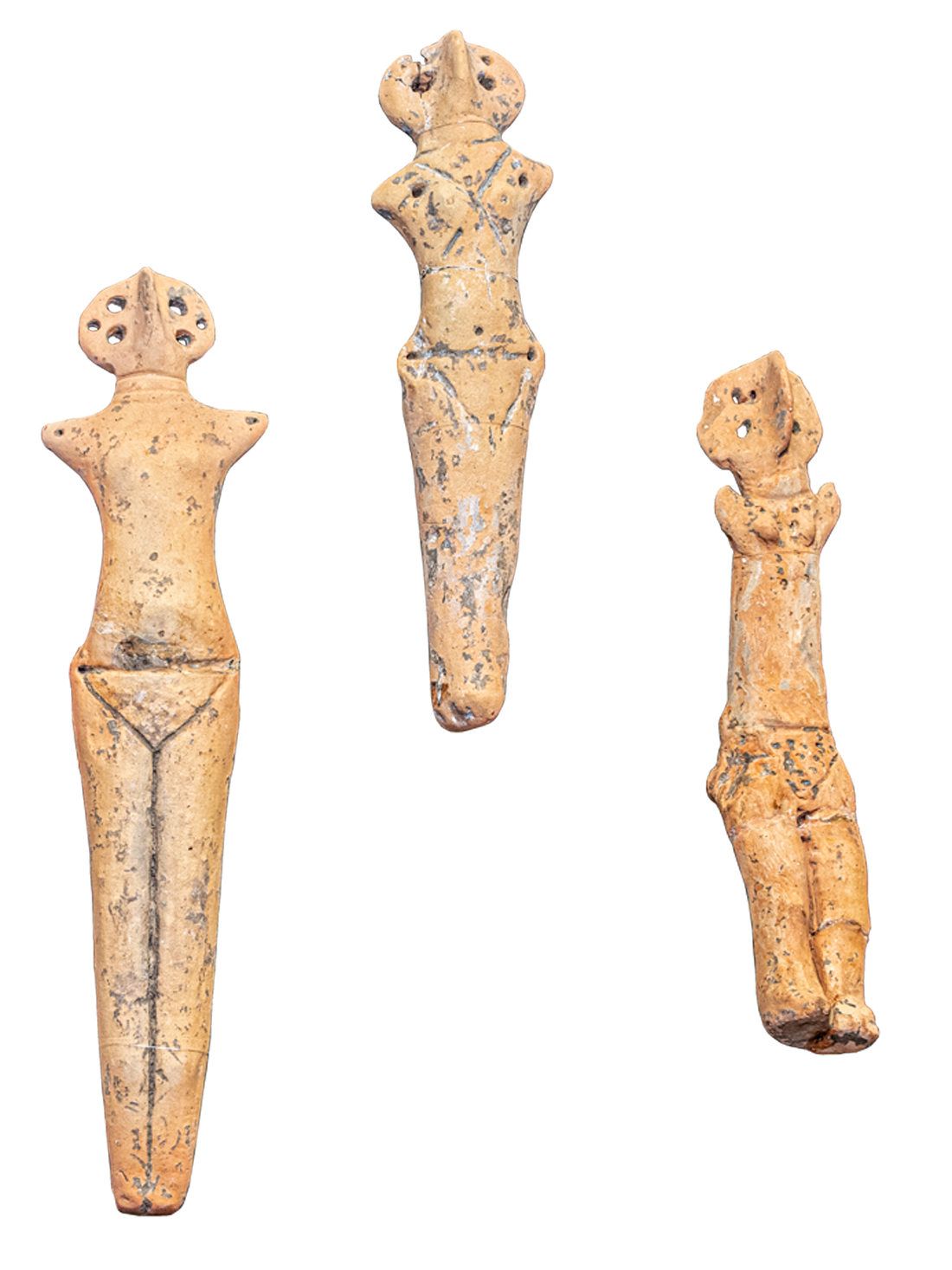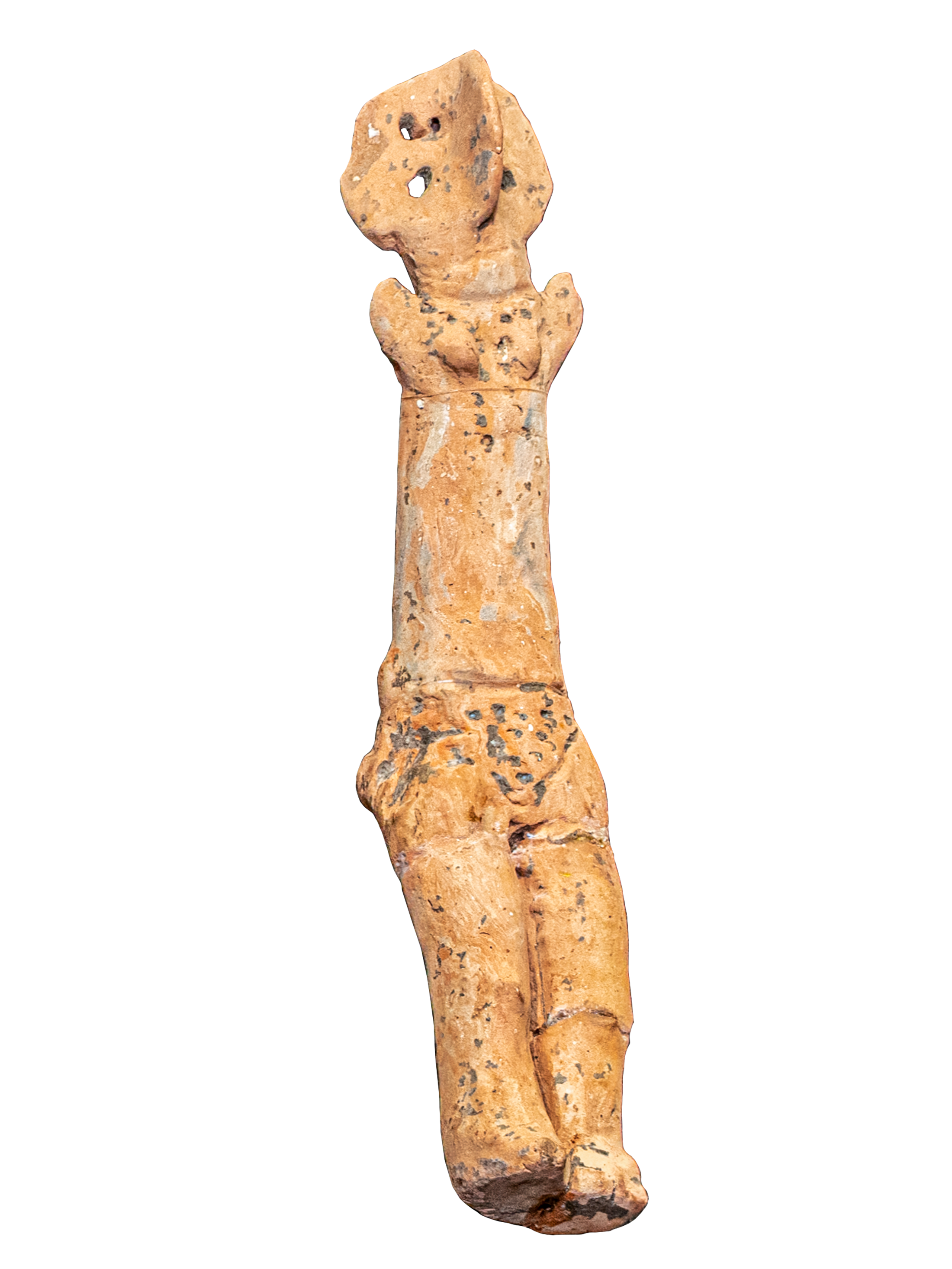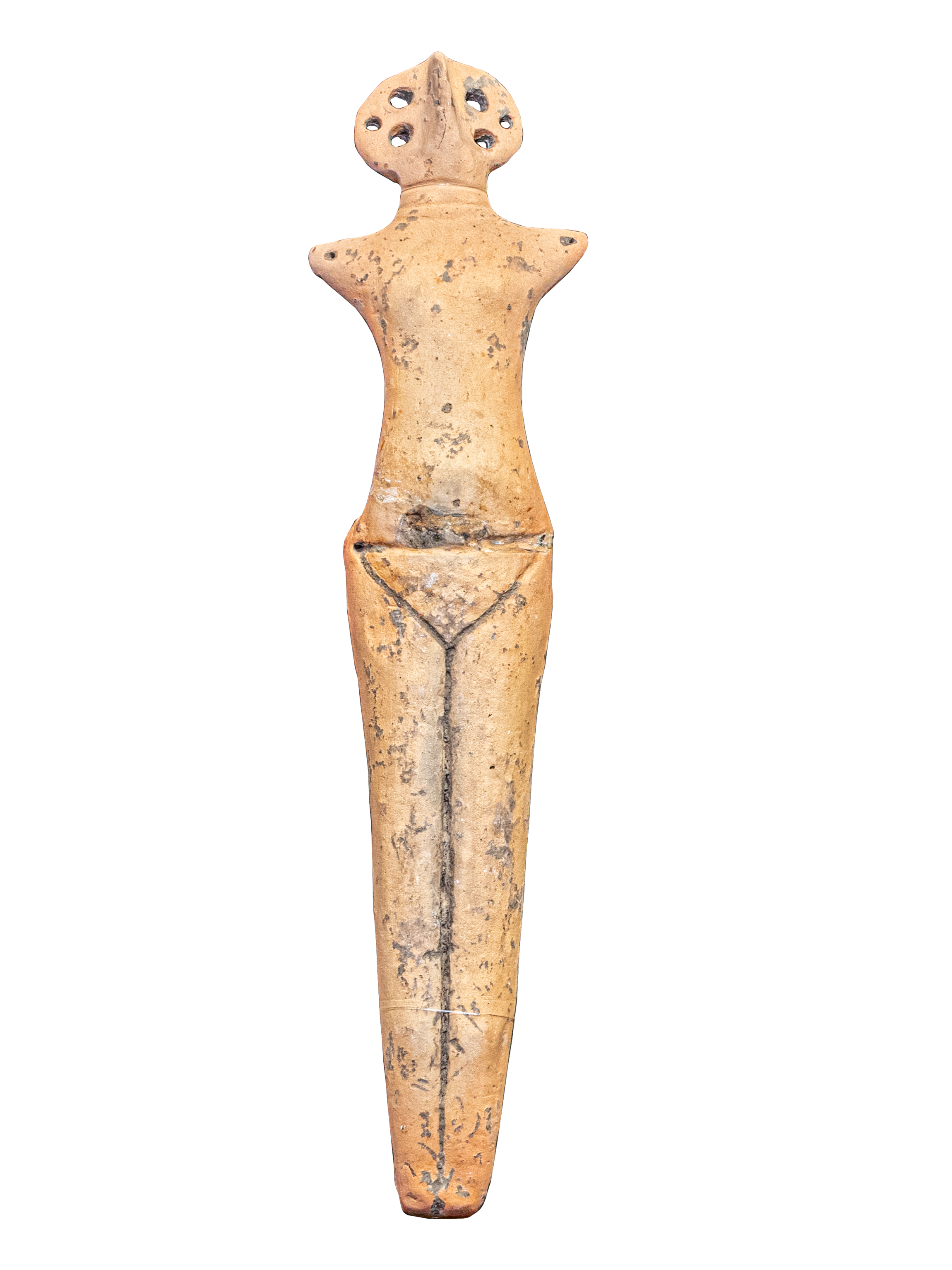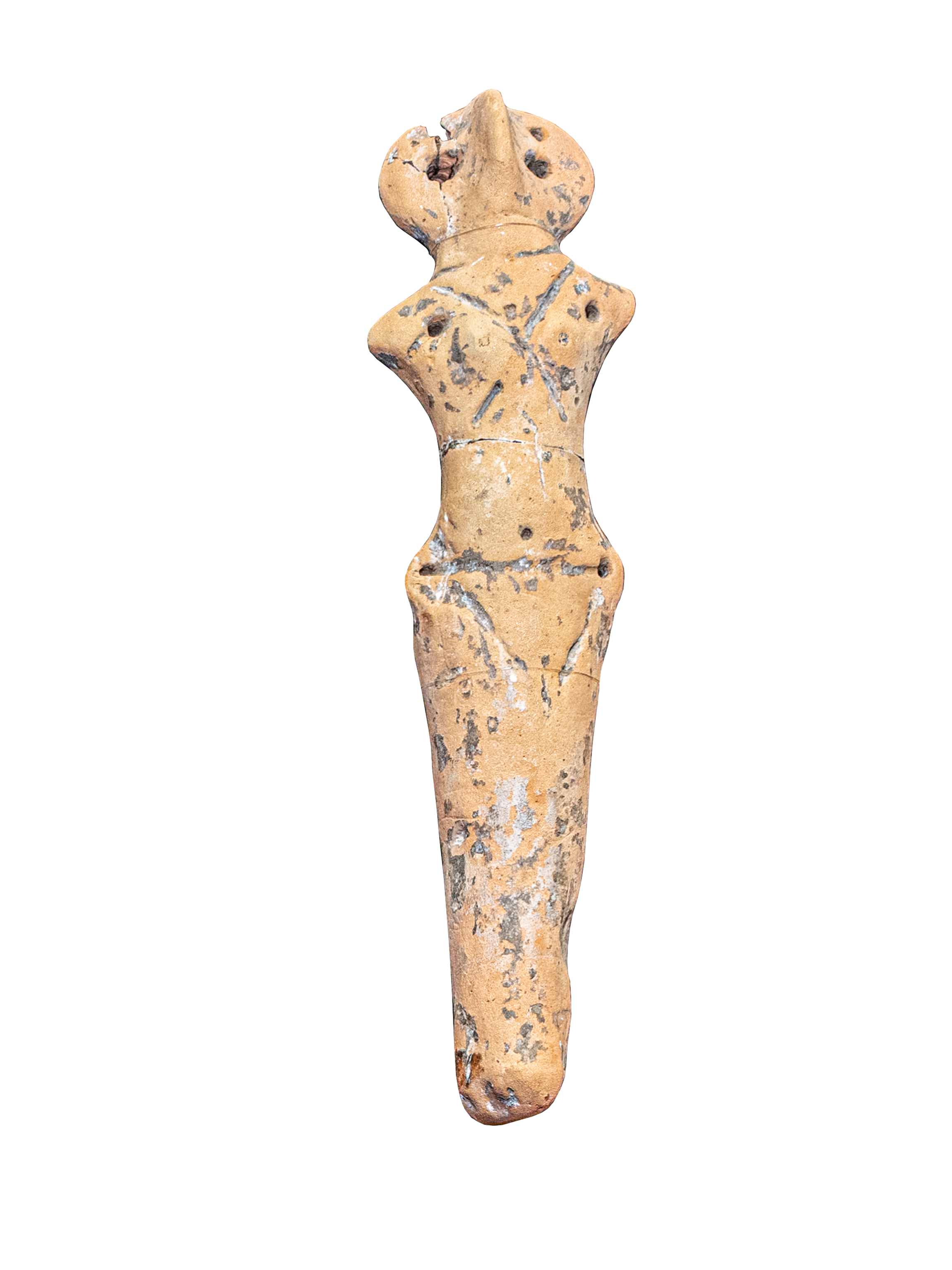Sculptures of Trypolye Culture




Sculptural images of people (anthropomorphic images) and animals (zoomorphic images) of the Trypolye culture are quite diverse both in form that they are made and in the degree of realism. They were found both in settlement and burial grounds. Women's figurines are made in a conditionally realistic style, parts of body are sculpted with quite simple techniques, but still those are very expressive.
More information...Heads are made as flat disk with paired holes on the sides. Large nose is made with a pinch. Arms are marked with small protrusions, the breasts with small convex patches. The waists of female figures are very narrow, the wombs are emphasized by a triangle, the legs of the figures are clamped, feet are flattened. All three figures have notches or indentations on their necks that indicate jewels, some kind of a necklace. One of the figurines has a baldric on the chest with deep lines. The two figures have holes on the sides at the waist. The statuettes are dated by the second quarter of the IV Millennium BC.
Functional purpose: usually such figurines are found in homes, in a special area near the hearth, often in groups. They played an important role in domestic rituals and served as objects of worship for members of a particular family. Traditionally, they are referred to as objects of the cult of fertility, but their semantic meaning could be more diverse.
Note of uniqueness: anthropomorphic and zoomorphic images are not unusual in settlements of the Trypolye Culture. However, each of these items is unique in its own way, since each is hand-sculpted.



